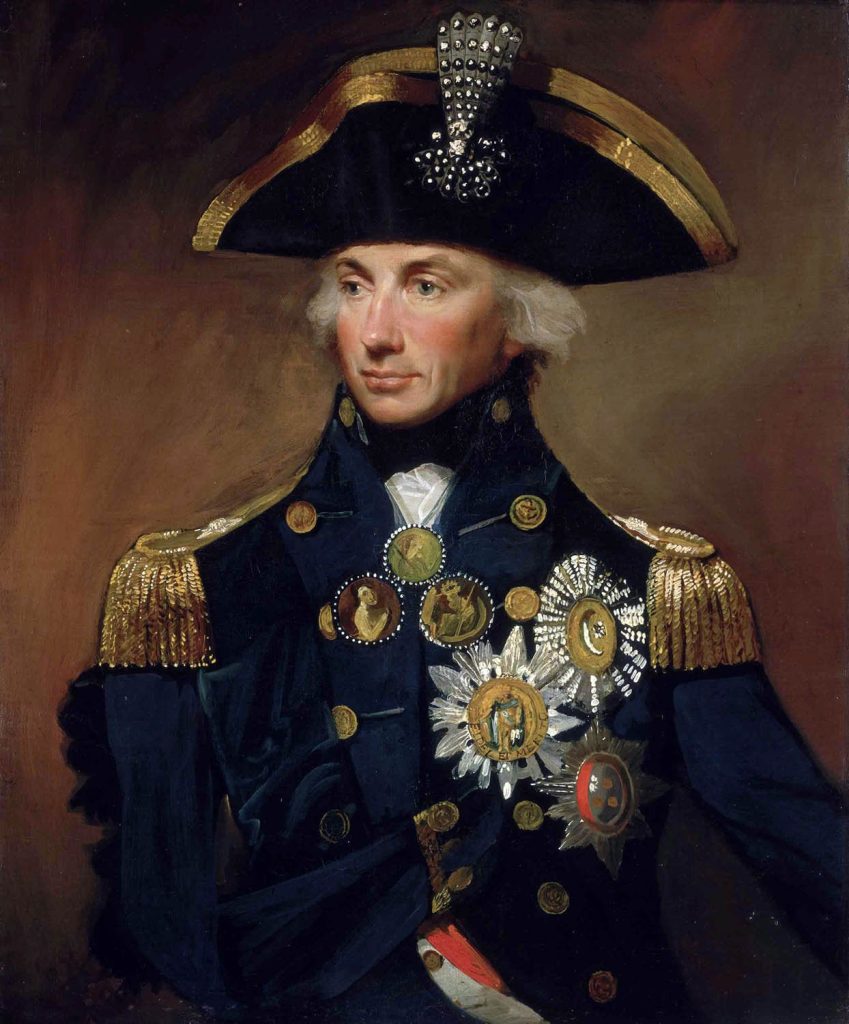In late 1774, a newly built ship was launched into the cold water of the River Humber at the northern British city of Hull. Later named Boreas, the vessel was one of a series of Mermaid-class frigates — a variant of the 28-gun warship that was commonplace among the 270 or so ships that made up the Royal Navy.
Once completed at Chatham dockyards in October 1775, HMS Boreas saw action in the Caribbean — attacking and capturing French and American ships and taking part in the unsuccessful Battle of Grenada in July 1779.
The captain who took over command of Boreas in the spring of 1784 had also seen a good deal of action. His name was Horatio Nelson, and he was to attain almost mythical status as a British naval hero and victor of the crucial Battle of Trafalgar (see the January 2008 issue of Caribbean Beat).
Aged 28, Nelson had already served in the Arctic, the East Indies, North America and the Caribbean, and had developed a reputation as an intelligent and ambitious officer who was also well connected in the naval hierarchy.
His command of Boreas came with a specific — if slightly unglamorous — assignment: to enforce the Navigation Acts (pieces of legislation intended to protect British imperial trade from foreign competition and interference) in and around the Leeward Islands Station, a naval base in the British Caribbean colony of Antigua.
Antigua had a large natural harbour on its south coast, which provided protection against hurricanes, and strategic dominance of the Leeward chain leading towards Barbados. It was also a huge producer of sugar — based on the inhumane system of plantation slavery — and was a valuable asset of the British Empire.
The economic demands of the Empire had created the Navigation Acts. In simple terms, Britain’s Caribbean colonies were only allowed to carry out imports and exports with Britain itself. But this closed circuit had been disrupted from 1776 by the independence of the United States, and the sudden appearance of a new and powerful trading nation in the vicinity of the Caribbean.
Nelson’s task was to prevent the British colonies from trading with the US, and this brought him into direct conflict with the colonists themselves, who preferred to deal with their new neighbour rather than distant London. Other British officials, island governors, and naval personnel apparently took a relaxed attitude to regular breaches of the Navigation Acts, opting to maintain friendly relations with local planters and exporters — but Nelson was not inclined to turn a blind eye.
From the moment he arrived in Antigua in July 1784, he led the interception of foreign ships — mostly American — which sought to buy sugar from the Leeward Islands and sell manufactured goods there.
From the outset, he also hated Antigua — just as the Antiguan colonial elite hated him. Britain was not at war with the US, and American traders thus considered his seizure of their assets illegal — and sued him. The merchants of neighbouring Nevis supported the Americans and, for a while, Nelson was in danger of arrest and imprisonment.
Aware that his superior officer — Admiral Hughes, based in Barbados — was unlikely to help, Nelson retreated from his official residence to the relative security of Boreas, moored at the naval base at English Harbour. He refused to compromise, writing in January 1785:
Whilst I have the honour to command an English Man of War, I never shall allow myself to be subservient to the will of any Governor, nor cooperate with him in doing illegal acts … I know the Navigation Law.
With his rigid sense of duty, Nelson endured rather than enjoyed his stint in the Caribbean. Assailed by mosquitos, his cabin invaded by vermin, and facing constant indiscipline among his men, he was struck down by debilitating fever. “English Harbour I hate the sight of,” he complained.
But there were lighter moments, too. He appreciated the company of Mary Moutray, the young wife of the Yard Commissioner, and was perhaps more than a friend. “Was it not for Mrs Moutray, who is very, very good to me, I should almost hang myself in this infernal hole,” he wrote to a confidant.
Things changed when he met Fanny Nisbet, the young widow of a doctor and daughter of a senior judge in the colony of Nevis. Nelson got to know Fanny while visiting her uncle, President of the island’s Council, and may well have been attracted to her status as a member of the colonial elite. They corresponded, and Nelson confessed his loneliness and frustration:
I am alone in the Commanding Officer’s House, while my ship is refitting, and from sunrise until bedtime, I have not a human creature to speak to; you will feel a little for me, I think. I did not be over fond of sitting alone. The moment old ‘Boreas’ is habitable in my cabin, I shall fly to it, in order to avoid mosquitos and melancholies.
The pair were eventually married in March 1787, four months before Nelson completed his three-year term of service and returned to Britain. Fanny followed soon afterwards with her son from her first marriage.
HMS Boreas arrived in Portsmouth on 4 July and, according to Desmond Nicholson, Curator of the Antigua & Barbuda Dockyard Museum, “Nelson was so ill for this voyage that he had a puncheon of rum shipped for his body, in case he should die on the voyage.”
After three years in Antigua, much of it spent on the Boreas, Nelson could claim some success. The legal action taken against him was rejected by the local court, and his uncompromising attitude towards breaches of the Navigation Acts was upheld by the Admiralty.
The merchants of neighbouring Nevis supported the Americans and, for a while, Nelson was in danger of arrest and imprisonment
But he had made enemies by questioning what he saw as laxness among his superiors, and by acting according to his own instincts. He was viewed as a maverick, and it took five years for him to secure his next command.
He had also overseen improvements to the dockyard in Antigua, notably with the Engineer’s House and the Pitch and Tar Store built in 1785. These developments continued until the end of the 18th century, and the dockyard was eventually abandoned by the Royal Navy in 1889. Its renovation and transformation into today’s luxury heritage venue date from the 1950s.
Nelson’s career after the Antigua episode has been widely documented, and he remains a symbol of a long-lost British naval supremacy. His views on slavery have been scrutinised and found to be abhorrent, if typical for the age, but he still stands on his Column overlooking Trafalgar Square.
Fanny Nisbet’s story was less illustrious. Nelson abandoned her for a high-profile affair with Emma Lady Hamilton. Fanny was distraught, but reportedly remained faithful to her husband’s memory after his death in 1805. She lived until May 1831. (Caribbean Beat published a profile of her, and her relationship with Nelson, in the July/August 1998 issue.)
As for HMS Boreas, the vessel was downgraded in 1797 to a “slop ship”, selling supplies of basics such as clothing and bedding to Navy crews in the Thames estuary. In 1802, three years before the apotheosis of Trafalgar, it was sold at Sheerness — presumably for scrappage.

